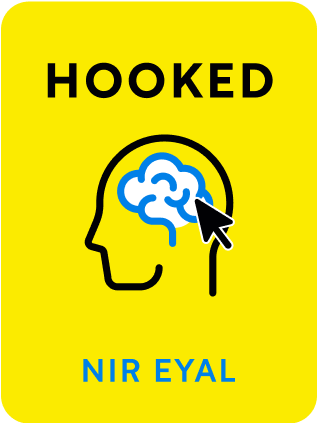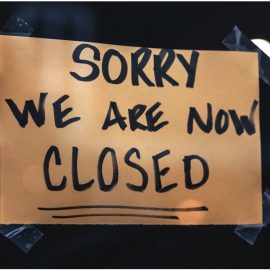

This article is an excerpt from the Shortform summary of "Hooked" by Nir Eyal and Ryan Hoover. Shortform has the world's best summaries of books you should be reading.
Like this article? Sign up for a free trial here .
What are Hooked marketing skills? How do Hooked marketing skills build on user habits?
Hooked marketing strategies start with a consideration of user habits. Then, you use the Hooked model to build out a product with a trigger, action, reward, and investment.
Read on for questions and exercises to help you implement Hooked marketing strategies.
Hooked Marketing Strategies Begin With Habits
Habits are a way for the brain to conserve resources by executing automatic behaviors without thinking hard about it. Habits are established when the action has continuously solved the problem in the past.
Think about the habit that you want your users to build, which will inform your Hooked marketing strategy.
- What problems do you solve for your user?
- How do users who don’t currently use you solve that problem?
- How much utility do you provide over the alternative?
- How often do you expect the user to use your product to solve their problem?
- What behavior habit do you want to form in your user? What does this habit look like?
Create Your Triggers
The chain reaction that starts a habit always begins with a trigger. Habits form like pearls in oysters. It starts as a tiny irritant, like a piece of sand, triggering continuous layering of coats to produce a pearl (a fully formed habit).
Think about your user’s pain points to create the best product.
- Write 3 internal triggers that could remind your user to take action with your product. Write them this way: “every time the user [internal trigger], she [first action]”
- What is the user doing right before using your product?
- Given this, what are the best places and times to send an external trigger?
- Think of 3 external triggers you could use. Then think of 3 outlandish external triggers (e.g. brain implants, electric shocks).
Improve Action
After the trigger, the user needs to perform the desired action. Reduce the frictions for your user to take action.
- Walk through how your user goes from trigger to action to reward. How many steps does the user need to take? How could you get rid of any steps?
- Which of these 6 factors is most limiting your users’ ability to take action? (Time | Money | Physical effort | Mental effort | Social deviance | Non-routine)
- How can you reduce that factor?
- How can you use cognitive biases to increase motivation to take action? (e.g. promote scarcity, give endowed progress.)
Design Your Rewards
To build a habit, your product must actually solve the user’s problem so that the user depends on your product as a reliable solution. The benefit the user receives is the reward.
Consider how to deepen the rewards that your users get.
- What reward does your product give that alleviates the user’s pain?
- Does this reward trigger cravings for more? Or are users content with what they get?
- Brainstorm how your product can give more Rewards of the Tribe.
- Brainstorm how your product can give more Rewards of the Hunt.
- Brainstorm how your product can give more Rewards of the Self.
Build User Investments
Investment is the last step of the 4-step model: allowing the user to invest in the product to improve future experiences. Get your users to invest in your product by taking action.
- What investment does the user do to add value to a future experience?
- In your product, how can you add investments in content curation, data, reputation, skills, or reminders? List all the ideas.
Discovering Opportunities for Hooked Marketing Strategies
You might be wondering what kind of product to build and how to get your users to build habits. That’s the essence of the Hooked marketing strategy. How can you find ideas for habit-forming experiences?
- Start with your own problems
- Ask why you do or don’t do certain things, and how you can make those tasks easier or more rewarding.
- Be aware of your behaviors and emotions as you use products.
- What triggered you to use these products? Were they external or internal triggers?
- Am I using these products as intended?
- How can these products improve their onboarding funnels, increase motivation or ability, provide better variable rewards, reengage through external triggers, or encourage users to invest in the product?
- Find what early adopters are doing
- Many inventions like airplanes, the telephone, and the Internet were mocked as unnecessary. Often it was a lack of imagination for the new possibilities.
- Early adopters show you niche use cases that can eventually be taken mainstream.
- Facebook started with just Harvard students.
- Consider what new technologies enable
- New technology waves establish an infrastructure first, enabling new applications to reach massive penetration.
- Figure out what behaviors new technologies make easier.
- The camera integrated into the smartphone made photo-taking far easier, giving rise to Instagram.
- Find how user interfaces can drive new habit formation
- Apple and Microsoft turned text-based terminals into GUIs modifiable with a mouse.
- Google simplified the search interface of Yahoo.
- Pinterest created an infinite-scrolling canvas of images that was more addictive than smaller fixed galleries..
- Consider “living in the future.”
- Ask three people outside your social circle what apps occupy their phone’s home screen. Ask them to use their favorite app and observe any nascent behaviors.

———End of Preview———
Like what you just read? Read the rest of the world's best summary of Nir Eyal and Ryan Hoover's "Hooked" at Shortform .
Here's what you'll find in our full Hooked summary :
- The 4 key steps that addictive tech products use to ensnare you
- Why user rewards need to be random and variable to have the strongest effect
- How to build irresistible apps yoruself






